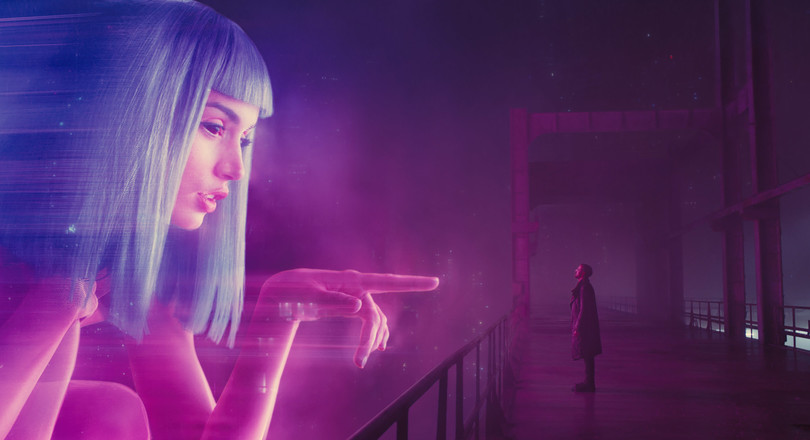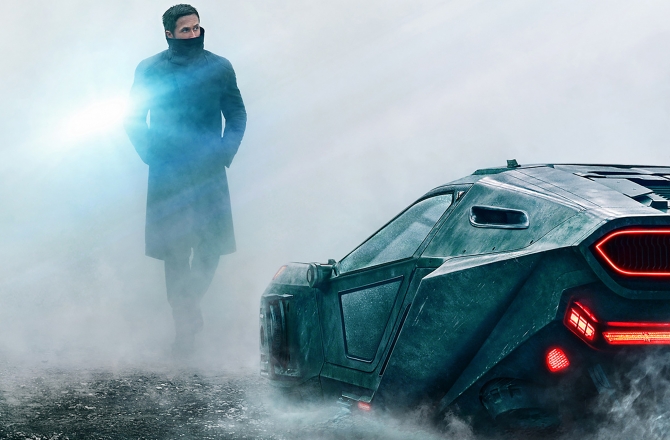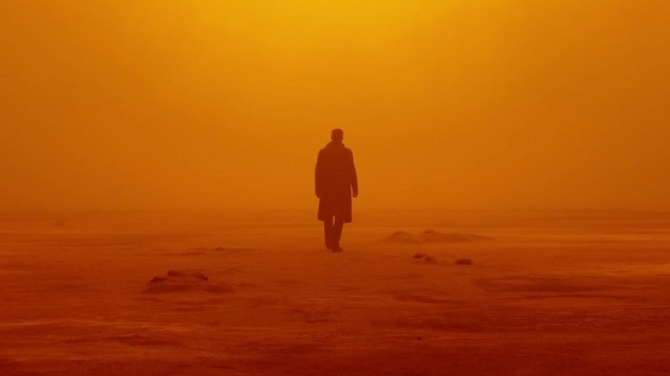
Using some stunning cinematography, Blade Runner 2049 challenges viewers to examine the very nature of their humanity. In a future in which people and 'robots' are indistinguishable, we're faced with questions about the soul, self-determination and mortality.
It starts with the jacket. We see the hero of the story, K (played by Ryan Gosling), unhurriedly alighting from his flying car in a jacket featuring a sizeable upturned collar. The collar protects K from the dust storms and just looks really cool. It is futuristic, yet 'normal' enough to be credible as a jacket of the future.
But what applies to the jacket, basically applies to the movie as a whole. The world of Blade Runner 2049 looks fantastic, but at the same time, just recognizable enough that you imagine yourself to be looking at a realistic future.

No food, but plenty of pollution
By 2049, it seems us humans have made quite a mess of this earth. Due to severe food shortages, we've switched to a diet of insects, and there are solar panels everywhere. But due to pollution, the world is bleak and forbidding, with Las Vegas the target of a 'dirty bomb', becoming radioactive and uninhabitable. Los Angeles, where the film mostly takes place, is a strange combination of skyscrapers and slums, and the only decoration and colour on the street comes from holographic adverts for Coca-Cola and Atari.
It's not an unthinkable vision of the future. Air pollution is already a major problem in LA, food will only become more scarce as the world population continues to grow, and the switch to sustainable energy seems to be unstoppable. And the rest of the technology we see in the film too, such as a speech-controlled drone that takes photos for agent K, and a holographic spouse, don't seem to be beyond the realm of the possible. The makers of the film studied emerging technology carefully, and simply drew a logical line 32 years into the future, to a time when these technologies may have become commonplace.
Man or machine?
However, it's not this vision of future technology specifically that makes Blade Runner 2049 so interesting. The really intriguing questions are triggered by the concept of the ‘replicant’. This is a biological 'robot', created in a lab, that is more or less indistinguishable from humans, and is used in the future for slave labour. In the original 1982 film, these replicants revolted against humanity, with the result that they had to be terminated by the so-called Blade Runners.

In 2049, there are still illegal replicants, who crawl out of the shadows to rebel against their oppressors. However, in the meantime, a major corporation has managed to create a whole new generation of replicants. These versions have been implanted with artificial memories, and that seems to make them more submissive and obedient than their rebellious predecessors.
I say 'seems', as the film doesn't really focus much on the daily life of the replicants. We do know, however, that K is one of the new 'robots', and is working as a Blade Runner, doing the dirty jobs that his human overlords wish to avoid. Gosling's dreamy but empty look perfectly reflect K's state of mind: he obediently follows all his orders, yet somewhere, deep inside, he somehow wishes to be truly human. This yearning creates a void that can never be filled by his holographic wife and the latest gadgets.
The nature of existence
We cannot say exactly what's going on in K's emotional life, as that would give too much away. What we can say is that he discovers something about his own life and the nature of existence that turns his world upside down. Is he really 'programmed' to be submissive? Or does he obey because he simply doesn't know any better?
It's these thoughts that drive him towards a confrontation with life's major questions. Creating almost lifelike humans in a laboratory feels unethical to us (read: 'Scientists: no designer babies just yet'), but the tangible effects are virtually inconceivable to us. Despite being almost technically possible. Blade Runner 2049 clearly illustrates by way of the main character's narrative how empty and uneasy life can be as a 'skin job' (the derogatory name that real humans give to the replicants). Just how inhuman is somebody who replicates a human in all things (including memories)?
Overwhelming
These questions aren't evaluated during the film itself, as all the movie does, is show us what happens to K. The director prefers to leave it up to the audience to ponder how painful K's life must be. So the viewer has a lot to process: he or she is exposed to an overwhelming audiovisual epic, has to follow a complex detective story, and is also compelled to think about some major issues looking towards the future. The result of all this is that the three-hour-long movie flies past, and is still playing on your mind days later. And there aren't many films that manage to do that.
Blade Runner can now be watched in Dutch Cinema.
Did you like this article? Subscribe to our weekly newsletter.
Images: Columbia Pictures.
Nieuwsbrief
Vond je dit een interessant artikel, abonneer je dan gratis op onze wekelijkse nieuwsbrief.

